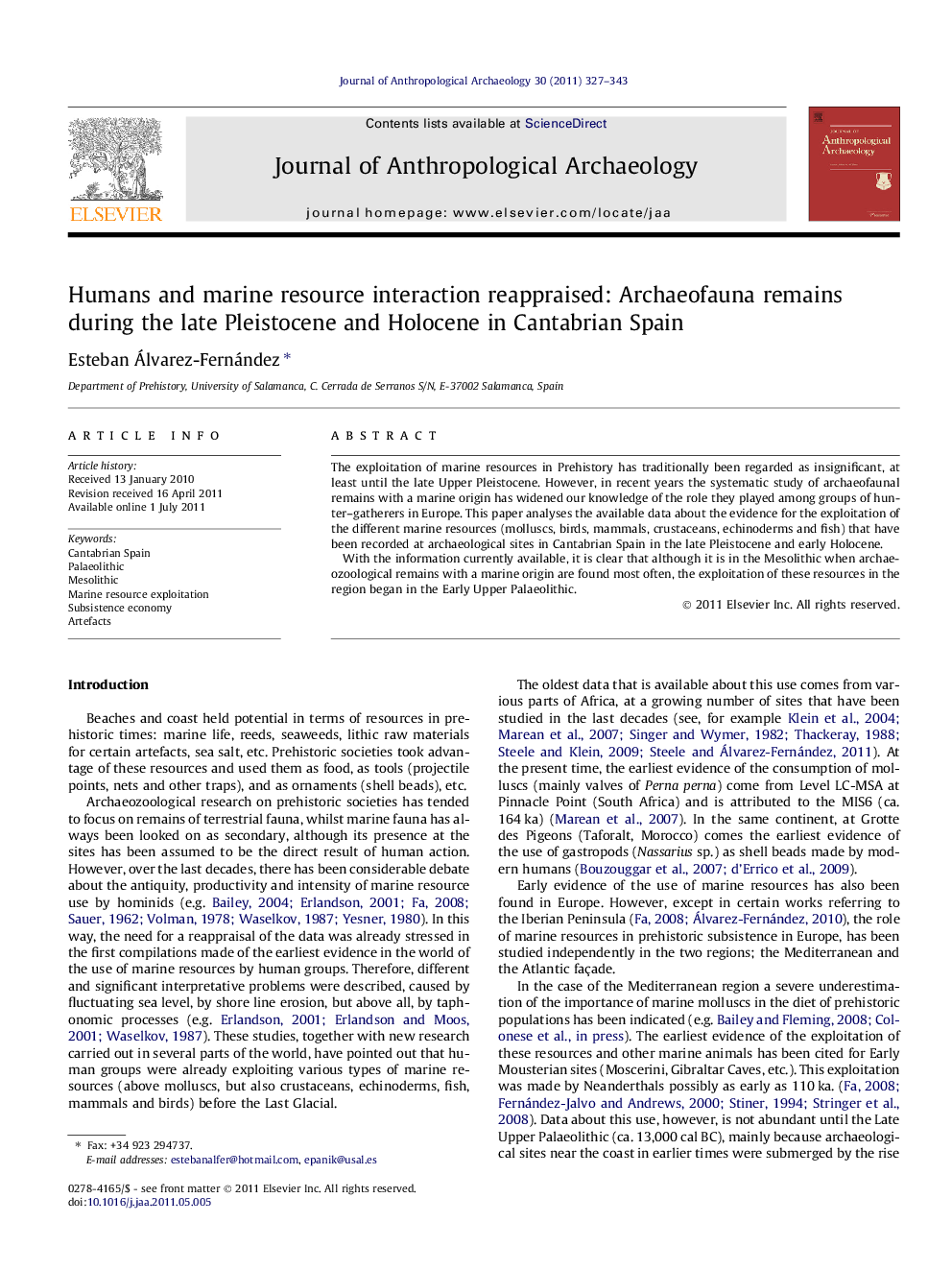| کد مقاله | کد نشریه | سال انتشار | مقاله انگلیسی | نسخه تمام متن |
|---|---|---|---|---|
| 1035043 | 943693 | 2011 | 17 صفحه PDF | دانلود رایگان |

The exploitation of marine resources in Prehistory has traditionally been regarded as insignificant, at least until the late Upper Pleistocene. However, in recent years the systematic study of archaeofaunal remains with a marine origin has widened our knowledge of the role they played among groups of hunter–gatherers in Europe. This paper analyses the available data about the evidence for the exploitation of the different marine resources (molluscs, birds, mammals, crustaceans, echinoderms and fish) that have been recorded at archaeological sites in Cantabrian Spain in the late Pleistocene and early Holocene.With the information currently available, it is clear that although it is in the Mesolithic when archaeozoological remains with a marine origin are found most often, the exploitation of these resources in the region began in the Early Upper Palaeolithic.
► We review human exploitation of marine resources in Cantabrian Spain.
► The use of marine resources becomes widespread after the beginning of the Upper Palaeolithic.
► This exploitation continues without a break during the Holocene.
► Humans consume a wide variety of marine animals and not only molluscs as previously thought.
► Molluscs were gathered as food but also as raw material to make artefacts, such as tools and pendants.
Journal: Journal of Anthropological Archaeology - Volume 30, Issue 3, September 2011, Pages 327–343